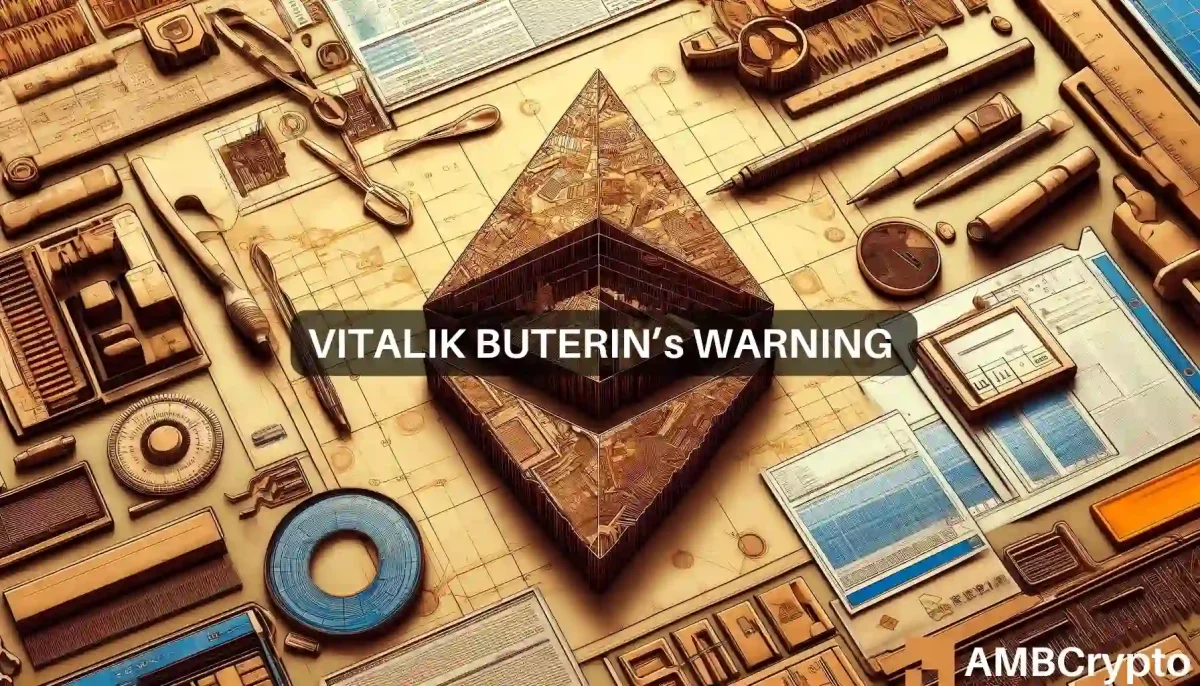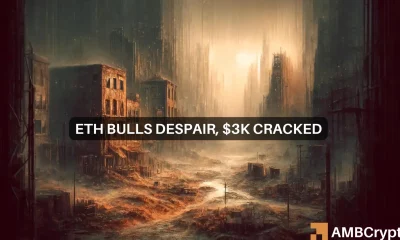Solana vs Ethereum again: ‘Small blocker argument’ returns

- Ethereum’s disregard of L1s raises questions once again.
- Layer 2 security concerns challenge Ethereum’s decentralization commitment.
Amidst the ongoing crypto bloodbath, Ethereum [ETH], the leading altcoin, mirrors Bitcoin’s [BTC] downward trajectory, with its daily and weekly charts awash in red.
While it records a modest 3% dip in one day, the past week has seen more significant losses, with double-digit declines exceeding 16%.
However, amidst these volatile swings, an unexpected question arises: Does Ethereum’s architecture hold the top spot?
Concerns surrounding ETH’s architecture?
In a recent article, David Hoffman, co-owner at Bankless, highlighting the lasting impact of the Bitcoin block size wars on today’s crypto community said,
“A lot of people’s arguments about how you should build crypto or what crypto should look like can be characterized as like a big blocker or a small blocker argument.”
Interestingly, outlining the modern-day scenario he added,
“Solana is the big blocker and Ethereum is the small blocker.”
This underscores the ongoing debate wherein Solana [SOL] advocates for L1 scalability, aiming for instant, free transactions. While Ethereum prioritizes L1 decentralization, emphasizing L2 scaling.
Furthermore, delving into the concept of block complexity, comparing blockchains with and without a virtual machine, Hoffman said,
“All chains before Ethereum were missing this key element, and instead tried to add functionality as individual op-codes, rather than a fully expressive virtual machine.”
Additionally, reiterating the importance of finding a balance between scalability and decentralization, Vitalik Buterin, in his 2019 article noted,
“Keep layer 1 simple, make up for it on layer 2″ is NOT a universal answer to blockchain scalability and functionality problems.”
Buterin said this because this approach fails to consider that L1 blockchains themselves must have a sufficient level of scalability and functionality for this ‘building on top’ to be possible”.
What’s more to it?
Needless to say, this has resulted in ETH becoming less affordable for individual users but more suitable for entities like chains, exchanges, and funds.
Remarking on the same, @RyanSAdams highlighted,
“’Ethereum is too expensive’ is a really bad take.”
Additionally, comparing Ethereum L2 solutions with the Cosmos chains, Sam Hart noted,
“Cosmos isn’t a technology or an ecosystem, it’s the choice to build a sovereign application that seeks to interoperate with others.”
In fact, recent allegations of top Layer 2 solutions potentially mishandling user funds have raised doubts about Ethereum’s commitment to decentralization, echoing concerns voiced by Justin Bons,
“ETH gives decentralization lip service, but actions speak louder than words.”
All this brings forth a question: Does Ethereum’s architecture need a revamp?






